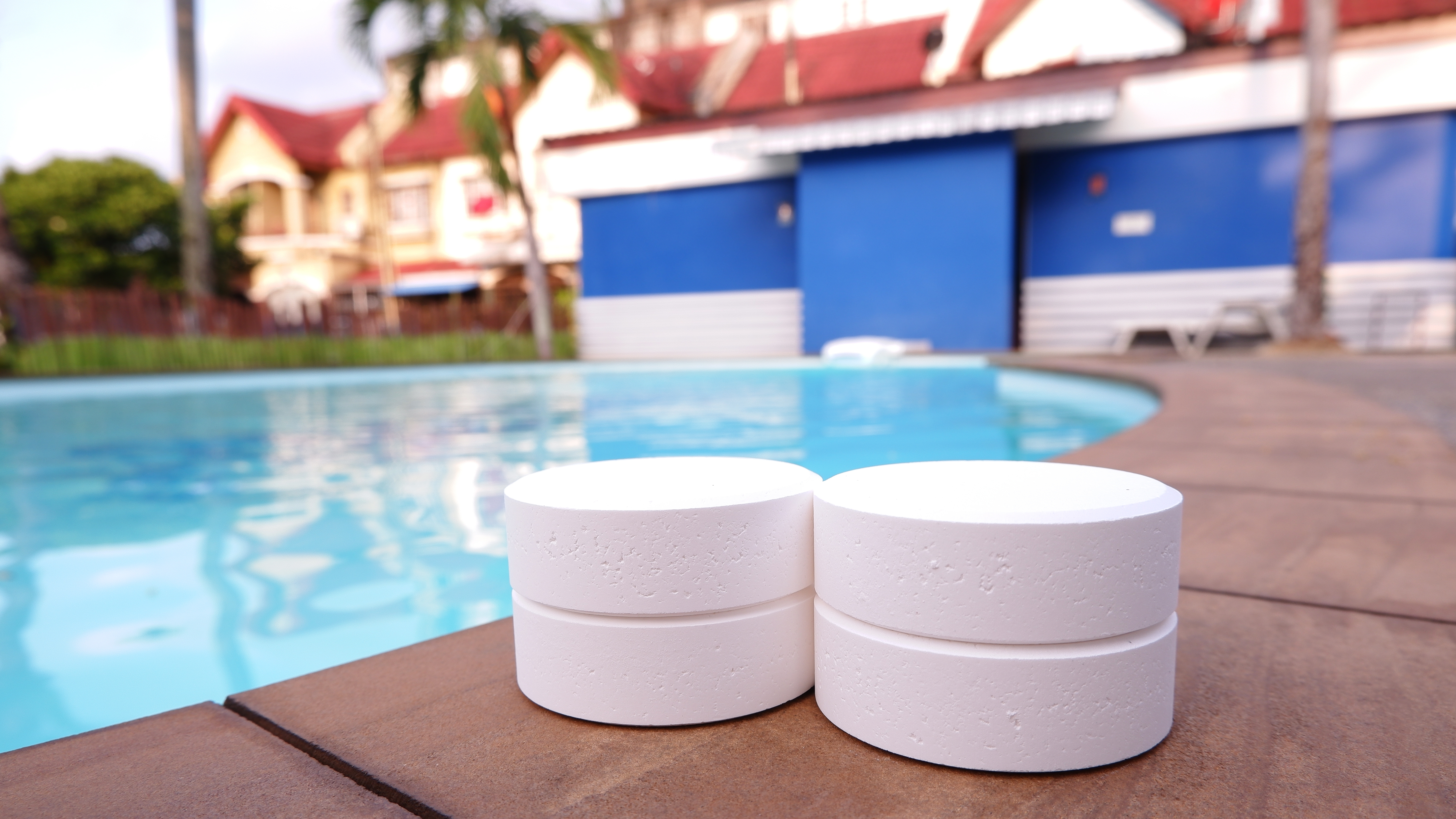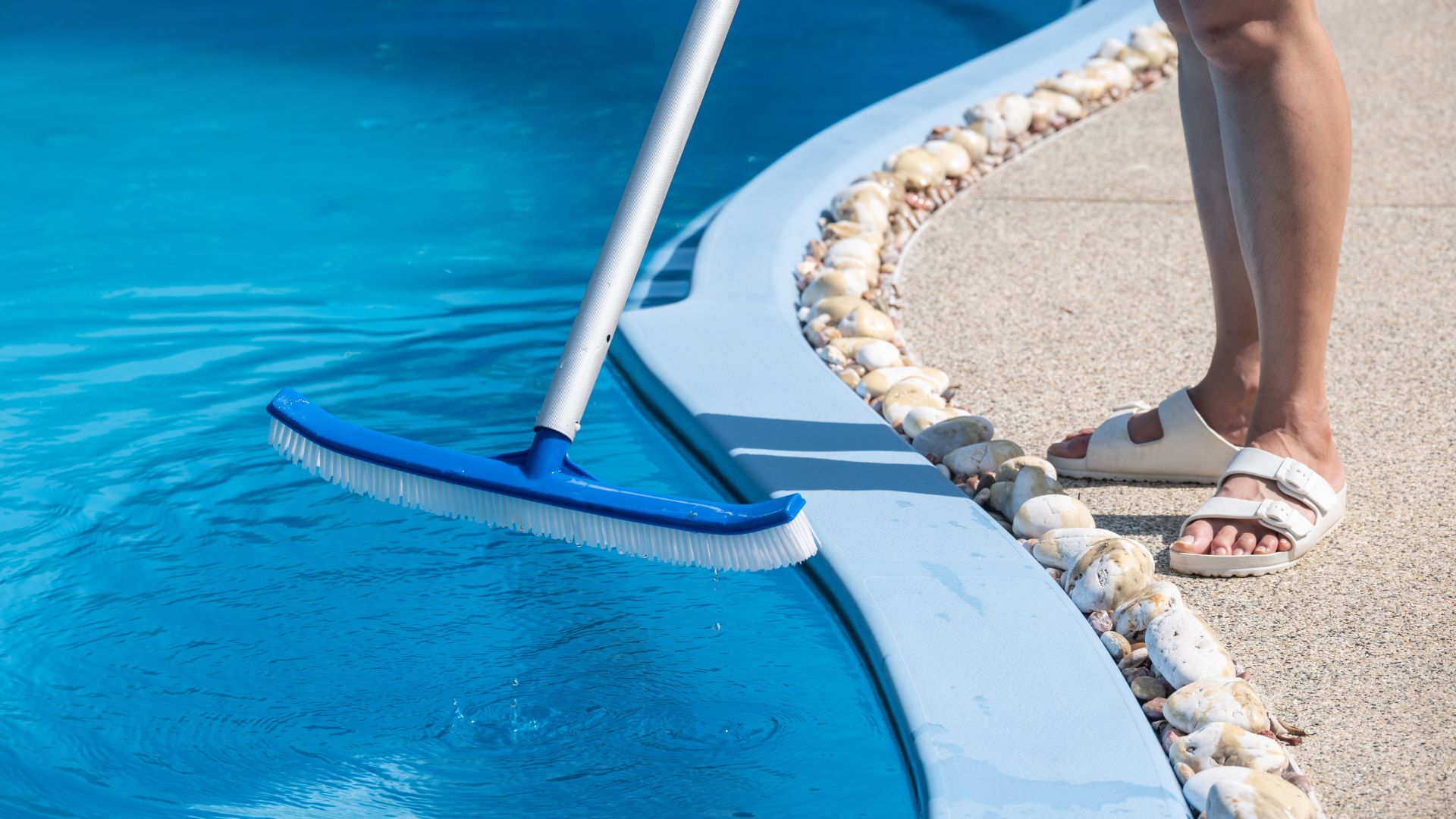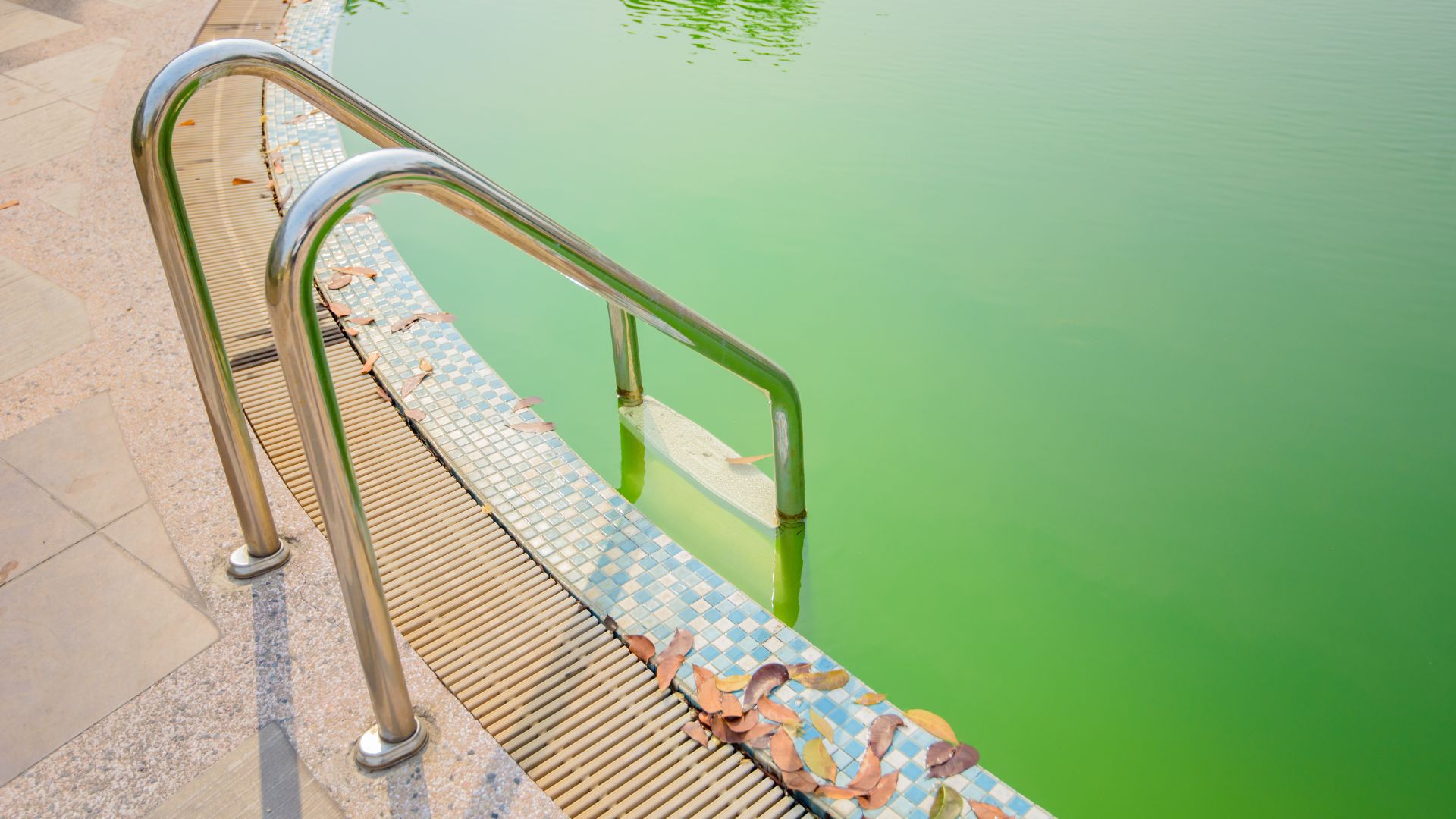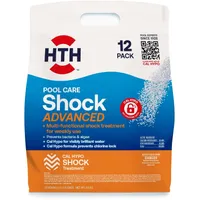How to shock a pool — 5 steps to clean, clear swimming water
Shock your pool the right way with these expert tips

Summer is fast approaching, which means it's time to dust off your patio and clean your grill. If your pool has been sitting dormant for the winter months, knowing how to shock a pool is one of the most important steps to make your water clean and safe to swim in, and while it's a drawn-out process, you only need to do it a few times a year.
Shocking your pool is done by super chlorinating it. By adding a high quantity of chlorine to your water, you will kill bacteria and restore your water to a sanitary state that is safe for swimming. While it takes a few days, it's very easy to shock your pool yourself, and if you do it now you'll have a clean and clear pool in time for Memorial Day.
We spoke to pool experts for guidance on how to get your pool safe and sparkling clean. Here's what they said.
Why is it important to shock your pool?
We spoke to James Bridge, a swimming pool expert with 45 years of experience, and the owner of Poolman, a premier installer of swimming pools and hot tubs.
"Shocking your pool will provide a safe environment to swim in and ensure that all unwanted bacteria is killed off," said Bridge. "This process is normally carried out when a pool has turned green. The process requires using either a liquid or granular chlorine to raise the free chlorine level in order to kill bacteria that is present in the pool water, which is normally algae."
How to shock a pool
1. Make sure you use safety equipment
Although we associate chlorine with a clean and sanitary swimming pool, a high dose can be dangerous if it gets in your eyes or on your skin, so ensure you wear goggles, avoid breathing in fumes, and cover any exposed skin when handling your shock.
It's a good idea to wear clothes that you wouldn't mind becoming damaged, because chlorine in high concentrations can discolor or bleach clothing. Just in case there are any mishaps, keep clean water nearby so it can be used for rinsing.
Get instant access to breaking news, the hottest reviews, great deals and helpful tips.
2. Add your shock

It is recommended to add your shock in the evening, as sunlight can burn off your chlorine and make your shocking process less effective.
When your pool is turned on and running, it's time to add your shock. There are a range of brands on the market, and they all come with instructions to help you figure out the right dosage for your specific pool size. If you're using granular shock you will need to mix it manually to achieve the right concentration. You can also buy liquid shock, which can be added directly to your pool.
Make sure you apply your shock in a few areas of your pool to ensure it does not concentrate all in one area and risk bleaching your liner. You should also be careful of splashing as you add, ensuring you wear goggles throughout.
HTH Swimming Pool Care Shock Advanced: $52 for a pack of 12 @ Amazon
Highly rated by Amazon reviewers and #1 pick by The Spruce in its guide to the best pool shock, this swimming pool shock comes in a pack of 12 but can also be bought in a 1-pack or 6-pack. It claims to resolve pool water problems within 24 hours to leave your water crystal clear.
3. Use a brush to distribute your shock

By using a brush to dislodge any algae that's stuck to the lining of your pool, you will ensure that no area is missed by your chlorine concentrate. Use your regular pool brush to break down any stubborn buildup, especially around the water line of your pool. This will all get picked up when you run your pool filter and leave you with a spotlessly clean pool.
4. Run your filter
Once you have disrupted algae buildup in your tub it is time to run your filter. Doing this will restore your chlorine levels to a safe level, and tackle any bacterial buildup in the jets of your pool.
Don't expect your pool to be safe to swim in right away. Running the filter could take as long as a few days, and at least 24 hours.
5. Test before use
"After a shock treatment has been carried out, be sure to test the pool water before entering the pool to swim. Pools should only be swum in if the correct chemical levels are correct," says James Bridge. Here are the levels to look out for:
- pH: 7.2-7.8
- Total Alkalinity: 80-120 ppm
- Calcium Hardness: 180-220 ppm
- Cyanuric Acid (Stabilizer): 30-50 ppm
- Chlorine levels: should remain constant in the 1-3 ppm range
How often should I shock my pool?

"It is good practice to shock the pool at the start and end of the season — typically May and September" said Bridge.
"The process is the same, however, some bacteria can remain active when normal chlorine levels are present within the pool water. Chlorine is recommended to be kept at a level of 1-3ppm in a domestic pool."
If your water lacks clarity though, it's worth doing some other tests before deciding it's time to shock it. "Normally the water starts to look murky and you are unable to see the bottom of the pool when it's time to shock it," said Bridge. "But you should also carry out a series of chemical water tests to ensure that no other chemical is out of balance, such as the pH or alkalinity, as these can also create poor water quality."
More from Tom's Guide
- Robot pool cleaners — 5 reasons to buy and skip
- How to winterize an above-ground pool
- My Apple Watch 8 died after a swim — here's what I did next

Millie is the Managing Editor of Homes at Tom's Guide. She's been reviewing home tech for over five years, testing everything from coffee makers to the latest vacuum cleaners.
With particular expertise in cookware and kitchen appliances, you'll struggle to find an air fryer Millie hasn't tested. She's traveled the world reporting on the latest home innovations and product launches, learning how to use pizza ovens from Pizzaiolos in Naples, and touring the De'Longhi factory in Venice. Millie is also an SCA-Certified barista.
When she's not reporting on home and appliance trends, Millie loves watching live music. She's currently learning the guitar - naturally, she plays a Fender.

